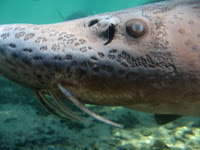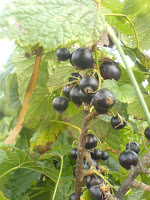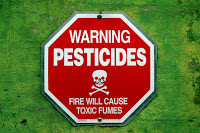I knew it would happen at some point and now www.decanter.com have reported that the US Government is planning to place labels on bottles of wine warning consumers  of possible food allergens from eggs, wheat and fish.
of possible food allergens from eggs, wheat and fish.
This topic is one of my soapbox favourites as I firmly believe that we need to know exactly what it is that we are drinking. However the Government are tackling the tip of the ice berg by focusing only on allergens. Check out my blogs Why Do Some Wines Give Us Headaches?, Grapes on Steroids and Additives.
The US government has proposed that wheat used in the production of wine barrels, egg products used for  wine fining, and fish gelatine, or isinglass, used for wine clarification, be labelled on wine bottles.
wine fining, and fish gelatine, or isinglass, used for wine clarification, be labelled on wine bottles.
The European Union also foresees mandatory labelling of food allergens, but its regulations grant at least provisional labelling exemptions for certain cases, including egg-based products and fish gelatine for wine fining and clarification.
Vintners have been using byproducts from milk, eggs, wheat and even fish guts in the winemaking processes for centuries.  Thanks to th ese binding agents, the larger molecules sink to the bottom of the barrel, leaving the wine above it clean.
Thanks to th ese binding agents, the larger molecules sink to the bottom of the barrel, leaving the wine above it clean.
Wine industry veterans say the labels could mislead consumers, leading them to believe wine contains milk or fish membranes. Vintners use a milk protein called casein and a substance derived from the inner membrane of the air bladders of sturgeon, called isinglass, to bind with yeast, bacteria and excess tannins that are naturally found in the winemaking process.
 The proposal, which could be passed by the end of the year, would require companies to redesign the labels on every bottle to protect people who are allergic to certain foods. Executives at Sonoma and Napa county wineries and their trade groups say few, if any, wine drinkers suffer allergic reactions from fining agents, which are nearly untraceable by the time consumers uncork or unscrew their bottles.
The proposal, which could be passed by the end of the year, would require companies to redesign the labels on every bottle to protect people who are allergic to certain foods. Executives at Sonoma and Napa county wineries and their trade groups say few, if any, wine drinkers suffer allergic reactions from fining agents, which are nearly untraceable by the time consumers uncork or unscrew their bottles.
 Ironically, in my opinion, this is not really what the consumers need. My reasoning is that it is targeting the wrong components in the wine. If wine is going to be treated as a food source, and then naturally needs its contents labelling, it’s the other constituents that need outing.
Ironically, in my opinion, this is not really what the consumers need. My reasoning is that it is targeting the wrong components in the wine. If wine is going to be treated as a food source, and then naturally needs its contents labelling, it’s the other constituents that need outing.
This would then reveal some potential nasties such as the presence of flavourings such as the ones scandalously used in the cheap South African Sauvignon Blancs to give the characteristic green pepper nose to the wine. Or the blackcurrant and butterscotch flavourings used in New World Cabernet Sauvignons and Chardonnays. Not to mention the antifreeze (diethylene glycol) used to sweeten the wines in Austria.
And what about the residues left by pesticides? A lot of smaller Chateau go to great lengths to spray their grapes with garlic to keep off the bugs. Australia, with its phylloxera scare, certainly won’t be using garlic to spray thousands of acres. What effect will that have on the wine produced? Would you want to drink it?

